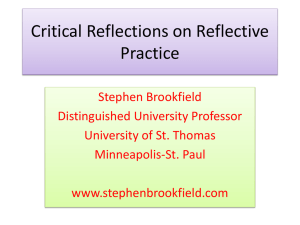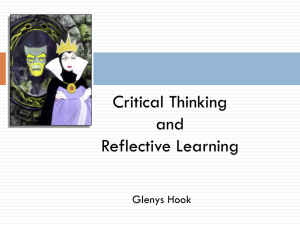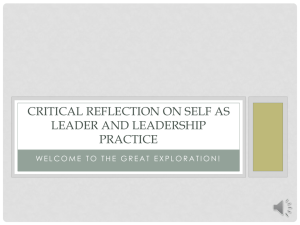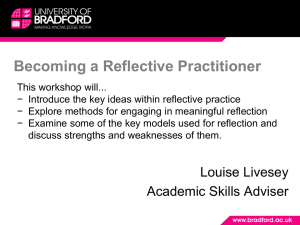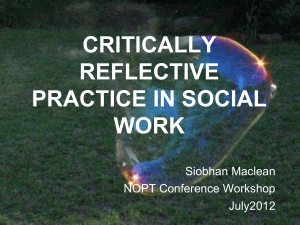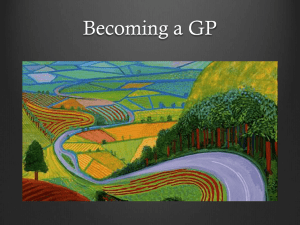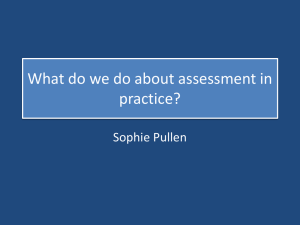Reflective writing
advertisement
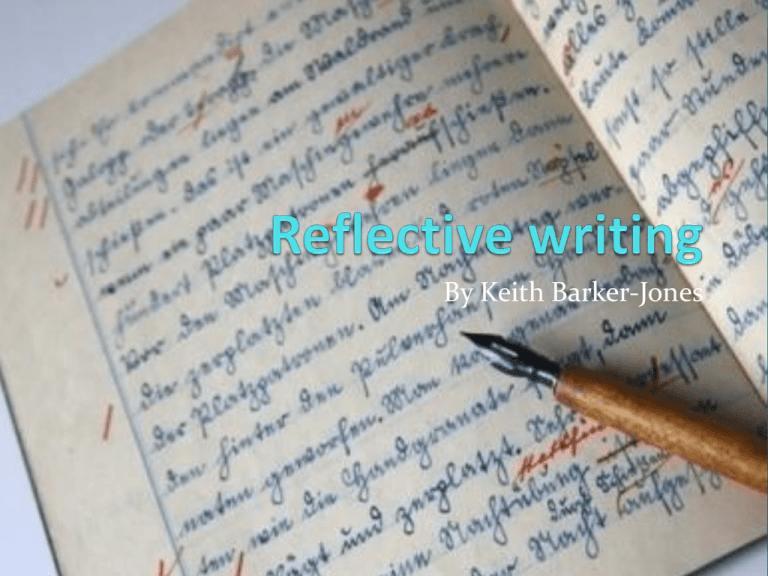
By Keith Barker-Jones What is reflection? Bolton (2006) believes the term ‘reflective practice’ to be unhelpful. She cites a ‘mirror reflection’ as being merely an image reproduced back-to-front. In contrast, the term becomes useful if one considers that reflection also encapsulates ‘careful or long consideration’ (Collins Compact Dictionary, 2002). What is reflective writing? By putting experiences and thoughts onto paper, the reflective writer is using a means of placing ideas and feelings into a ‘melting pot’ (Moon 2008) Moon (2008) also implies that these ideas, feelings and experiences can be expressed at varying levels from: A superficial, glancing text that is largely descriptive, to; A deeper, more profound evaluation that searches for reasoned solutions to problems The purpose of reflective writing Reflective writing provides a means of clarifying an issue For example: In respect of an idea or concept in a lecture that is poorly understood…. A metaphor for reflection Moon (2008) articulates the term ‘cognitive housekeeping’ as a metaphor for reflection The reflective process can order thought processes and, in effect, prime them for a solution Context for reflective writing This resource will present reflective writing in context of a higher education programme. The vehicle for reflective writing in this context is the reflective journal Writing a reflective journal What is a reflective journal? What is the purpose in keeping a reflective journal? How is a reflective journal written and presented? What is a reflective journal? A journal is a ‘string’ of unrelated (or related) entries The subject matter for each reflection could be, for example: Providing a solution to a problem (e.g. with an aspect of learning) How you faired in writing an assignment Your response to the feedback of an assignment How you can alter or improve attitude, behaviour or skills How you can extend learning and develop skills Your experiences or feelings of an event How you are embedding learnt skills in a work-based learning milieu What is the purpose in keeping a journal? A journal can be used to: Record key events and experiences Clarify or provide solutions to problematical issues Provide a platform to extend knowledge and skills A forum for experimenting and developing written expression and cognition Increase self-awareness and evaluate personal and professional growth Collate ideas or material that could be used in an assignment How is a reflective journal written? Each entry of the journal will have its own agenda and requirements. This, in turn, will accommodate a variety of written styles along a continuum from basic description to the more profound evaluation (Moon, 2008). How is a reflective journal written? Hence, the journal can be written along a continuum that comprises: Descriptive aspects Reflective aspects Critically reflective aspects Analytical and evaluative aspects (Adapted from Hatton and Smith 1995) References Bolton, G. (2006) Reflective practice: writing & professional development. 2nd Ed. London. Sage Publications Collins. (2002) Compact Dictionary, 21st Century Edition. 5th Ed. HarperCollins. Hatton and Smith (1995) Reflection in teacher education: towards definition and implementation, teaching and teacher education 11(1): 33-49. Cited in: Moon, J. (2006) Learning journals: A handbook for reflective practice and professional development. 2nd Ed. London. Routledge References Moon, J. (2008) Reflective writing – some initial guidance for students. [Online] Available at: http://services.exeter.ac.uk/cas/employability/students/ reflective.htm Accessed 16.12.08 Thompson, S. and Thompson, N. (2008) The critically reflective practitioner. Basingstoke: Palgrave Macmillan Moon, J. (2006) Learning journals: A handbook for reflective practice and professional development. 2nd Ed. London. Routledge


